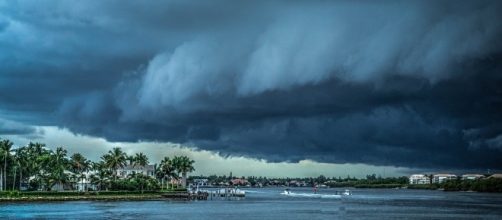The category 5 Hurricane Irma, the strongest hurricane ever recorded in the Atlantic, is edging closer to Florida and is expected to reach there on Sunday morning. The National Hurricane Center has issued a warning of possible "life-threatening inundation, from rising water moving inland from the coastline, during the next 36 hours." The Center advises the areas to be affected include the Florida Keys, Florida Bay, and Tampa Bay. Of particular concern are the Florida keys, a tropical archipelago which is home to 70,000 people, as no area of the islands is higher than 20 feet above Sea Level.
Evacuation
Governor Rick Scott spoke at a press conference in front of various media outlets in Sarasota County, asking residents to evacuate. Referring to the flood waters that could hit he stated: "6 to 12 feet of impact above ground level is now possible...this will cover your house". He added that those residents in the evacuation zone needed to leave immediately. 6.3 million people have been asked to evacuate, making up 25% of Florida's population. Residents of these areas have begun to move in rows of vehicles stretching for miles to get out of the storm's way.
Some Floridians stay put
CNN reporter Zain Asher spoke to one resident who decided not to leave. Peggy Monahan, of Fort Pierce, who owns a fruit and cattle farm there said: "we are close to harvesting our crops, and we need to be there to stick the trees back on the ground if they are blown up".
This is despite authorities going door to door in these areas and issuing a mandatory evacuation order.
Devastation in the Carribean
Earlier this week the hurricane caused the deaths of 24 people throughout the Caribbean. Wind speeds got up to 185 miles per hour devastating Barbuda, Haiti, Cuba and the British Virgin Islands among others. The worst hit was Saint Martin with 95 percent of the island destroyed.
Global warming back in the spotlight as Trump takes to Twitter
Donald Trump was ridiculed roundly, after writing on Twitter about the hurricane.
We will confront ANY challenge, no matter how strong the winds or high the water. I’m proud to stand with Presidents for #OneAmericaAppeal.
— Donald J. Trump (@realDonaldTrump) 8 September 2017
One wonders if the challenge of global warming, which the former reality star has denied the existence of, is one he would now like to confront.
A study published in the journal Nature last year by Robert M. Deconto and David Pollard showed that continued high emissions of heat-trapping gases could launch a disintegration of Antarctica within decades. With other areas of ice melting too, the rise in sea level by the year 2100 could reach 5 or 6 feet. To an area where the highest points of land are 20 feet, the devastation of storms like Irma would be much worse in the future if a serious effort is not made to lower greenhouse gas emissions.


